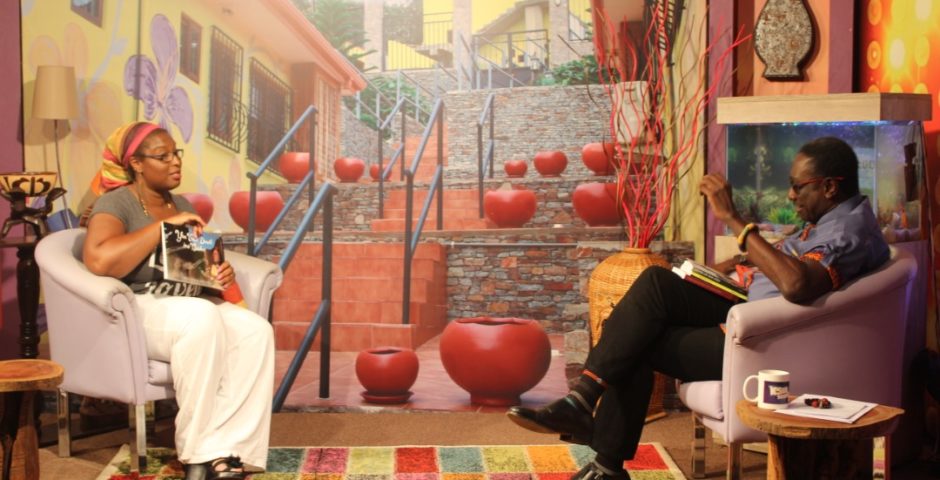The History They Don’t Teach Us
I have a problem with the way some of our municipalities are named in Ghana. They are a constant reminder of the oppressive colonial regime that Ghana found itself under for centuries, and in some sadistic way still takes pride in. The most offensive of these is McCarthy Hill, which is a west of the capital, and was the site of a battle between the British (led by Sir McCarthy) and the Fantes. The Fantes defeated General/Governor/Massa McCarthy during the skirmish, where it was said he died. The colonialists later named the site McCarthy Hill in his honor. I’ve waited my entire life for someone in government to rename the hill (which is now prime real estate) after the brilliant Chief or Fante general who led his forces to victory, but that day hasn’t come. My Spidey senses have advised me to stop holding my breath.
History was always taught in school from a very Eurocentric point of view. It wasn’t until I got to SOS HGIC and did my IB program that I even discovered that African history is taught from the White man’s perspective or that there was an alternative. The narrative was that we Ghanaians were tribalistic and therefore very easy to divide, which was how they came to rule us. It’s a narrative that is still very strong today, and embedded in the national psyche. ‘Divide and conquer’, they called it.
I grew up believing that Ghanaians were inherently “bad” and that white people were “good”. After all, what could be worse than selling out your fellow African for the benefit of a few beads or a mirror in trade? And why did we as people not try to resist more? I was disappointed in my heritage for a time in my life. Apart from the gallant tale of Yaa Asantewaa and her charge into battle against the British, I thought we were docile, pliable, malleable, vindictive, deceivable people…all the things we still call ourselves today.
That’s why I’m so glad I got the chance to visit Prince’s Town.
The area is traditionally known as Pokesu, which the guide told us meant “forest” in Nzema. It is at Cape Three Points, which is the southernmost tip of the country. The German’s arrived in 1683 and built a small fort on an elevated portion of land that was donated to them by Nana Jonkone, the chief of the area at the time. The German’s came to do earnest trading, and got along really well with the locals. They ‘donated’ the left over stones and bricks from the fort that they built to Nana Jonkone, and helped him build a small fortress for himself on the land near the beach. The German’s left the area after their business was complete and returned to Europe. However, they sold the fort to the Dutch but did not tell Nana that they had sold their donated property. Nana Jonkone moved in a little while later and converted the fort to the seat of his government. Imagine the Dutch’s surprise when they arrived and found all these Black guys in “their house.”
“What are you doing here man?”
“What do you mean, ‘what am I doing here’? I live here.”
“No…you don’t. Fritz sold me this land. Here is the bill of sale.”
“Well let me ask YOU a question, Bjorg. How did Fritz sell you something that I gave to him? I gave him that land, and he used my materials…except the wood. That came from Germany. And furthermore, he didn’t tell me that he was selling it to you! That’s just plain rude. I’m sorry. You’re going to have to go back to Holland.”
“That’s not possible. And I want you to know, we have guns.”
“Oh yeah? So do we!”
But Nana Jonkone did not have enough guns or men to repulse all these Dutchees. But he did have gold. He travelled to the Ashanti Region and begged Nana Prempeh for his help. He paid Nana Prempeh a calabash of gold for each Ashanti mercenary that would help fight against the Dutch and their unrighteous quest. The Ashantis easily quelled the attacks of the enemy, and kept them at bay for 20 years.
After the Dutch discovered that the mercenaries had left, they returned for the fort and attacked Nana Jonkone with venomous force. They pointed their canons towards the town and blew up his home. All the forts in Ghana have their cannons facing towards the sea. Prince’s Town is the only one with a cannon facing land. Nana Jonkone escaped the attack, and was never heard of or seen again. It has been said he died in the Ashanti region or was sold into slavery following the Dutch attack. Unlike their German predecessors, the Dutch came to trade in lucrative human flesh, and did so until they sold the fort to the British.
 Their treatment of the slaves was among some of the most inhumane I’ve seen to date. As a Christian, I was offended and disgusted. I wondered how Ghanaians could ever partake in the practice of Christianity as it was presented at the time, and what manner of Christ that these Europeans had presented that would make it acceptable to lock 300 men and women together in a 40 square foot room and conduct church services just outside of it. What do you mean, Malaka? I mean the dungeon was not built to be a dungeon. It was a store house for food that the Dutch later converted into a holding cell. There were no widows – only four small openings cut into the ceiling to let air in and out. When it rained, they could cover the holes, leaving the room in total darkness.
Their treatment of the slaves was among some of the most inhumane I’ve seen to date. As a Christian, I was offended and disgusted. I wondered how Ghanaians could ever partake in the practice of Christianity as it was presented at the time, and what manner of Christ that these Europeans had presented that would make it acceptable to lock 300 men and women together in a 40 square foot room and conduct church services just outside of it. What do you mean, Malaka? I mean the dungeon was not built to be a dungeon. It was a store house for food that the Dutch later converted into a holding cell. There were no widows – only four small openings cut into the ceiling to let air in and out. When it rained, they could cover the holes, leaving the room in total darkness.
[youtube=http://www.youtube.com/watch?v=yqlLsCAOoIc]
The straight and narrow road
 Because Fort Gross Friedrichsburg was not built for human captivity, it was easier for some of the more daring male slaves to try and make their escape. The enslavers soon put an end to that by constructing a straight and narrow path leading into the cell. They would place a soldier at either side of the path and tell their captives to walk within to confines of that path or be shot. Meanwhile, the slaves locked within would yell at the new captives, urging them to go back.
Because Fort Gross Friedrichsburg was not built for human captivity, it was easier for some of the more daring male slaves to try and make their escape. The enslavers soon put an end to that by constructing a straight and narrow path leading into the cell. They would place a soldier at either side of the path and tell their captives to walk within to confines of that path or be shot. Meanwhile, the slaves locked within would yell at the new captives, urging them to go back.
“There’s no more room! There’s no more room!”
I couldn’t even begin to wrap my mind around the scene.
Your last bath and a song
 Our guide took us to a well where the slaves would have a final wash down before being loaded onto the ship. The well was right behind the church. Hymns and songs of praise would ring out from the congregation as the enslaved were being hauled off for a lifetime of misery.
Our guide took us to a well where the slaves would have a final wash down before being loaded onto the ship. The well was right behind the church. Hymns and songs of praise would ring out from the congregation as the enslaved were being hauled off for a lifetime of misery.
Slavery’s dirty little secret
There is a tale of a young girl who managed to escape slavery after being sold by her uncle to the Europeans. She spent the rest of her life seeing the very same man who traded her for a petty item day after day in the market and in town. There is nothing else to the story, but I imagine the anguish and anger she must have felt.
That is the crux of slavery’s dirty secret that we don’t often discuss as Ghanaians. It’s estimated that as much as 60% of all captives were sold by a relative or someone they knew.
Was your son a trouble maker? Sell him to the Whites.
Did you want a new gun? Trade a child to the Whites.
Were you not getting along with your husband’s second wife? Sell her kids to the Whites.
Couldn’t afford all these kids? Sell a few to the Whites!
Sure there were slave raids and rival tribes sold their war captives into slavery, but there were not enough raids and wars to account for the millions of people that were shipped off from Ghana alone.
 The day ended on a high note though. Our guide offered us a canoe ride (which we thought was going to be free, but turned out to cost ₡8 apiece) on the lagoon that sat to the west of the town. I would like to say that it was beautiful, but it was absolutely terrifying. The canoe was 7 feet long and 8 inches deep. A gently breeze could have overturned and sunk it! At one point we got marooned on some rocks and our guide had to get out of the canoe and dislodge us. Emefa shrieked in fear. Her shrill cries sent birds and fish scattering throughout the mangroves. I advised her to sing something soothing. She murmured something about meeting her Maker, I think. I have never been more motivated to get out of the water!
The day ended on a high note though. Our guide offered us a canoe ride (which we thought was going to be free, but turned out to cost ₡8 apiece) on the lagoon that sat to the west of the town. I would like to say that it was beautiful, but it was absolutely terrifying. The canoe was 7 feet long and 8 inches deep. A gently breeze could have overturned and sunk it! At one point we got marooned on some rocks and our guide had to get out of the canoe and dislodge us. Emefa shrieked in fear. Her shrill cries sent birds and fish scattering throughout the mangroves. I advised her to sing something soothing. She murmured something about meeting her Maker, I think. I have never been more motivated to get out of the water!
We thanked our guide and he led us back to our cars using the most direct route – right through the town’s growing trash heap and grave yard. O_o
I began to itch, and walk a little more quickly. I wondered what Nana Jonkone might think of the town he fought so bravely to defend if he saw it today.







